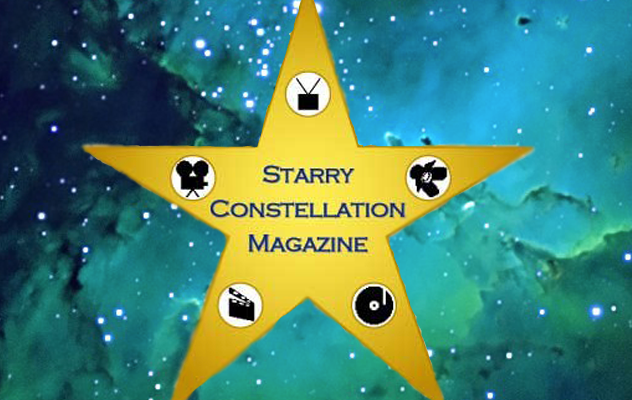
Features
How to Analyze Character Development in a Movie for Your Academic Paper
In order to compose an academic paper on character development in films, you need to be knowledgeable about narrative, psychology, and film. Character analysis is more than just what happens to a character in a movie. Rather, it explores the genuinely changing, developing or degenerating character’s character, their beliefs and their actions throughout the story. When analyzing character development in a movie for your academic paper, using services that write papers for me can help guide your structure and ideas. Academized.com is a reliable academic writing service that offers support for students who need assistance with their academic papers, including movie analysis.
The Ins and Outs of Characterization
Character development / character arc – The change of personality or inner life through a film. Everyone with a good story in the can goes through change, for better or worse. Such transformations can be minor or major, but they always aid the broader narrative and theme of the film. You need to be reminded that characters aren’t only what they do when you need to write a thesis about character development. They are nuanced creatures that come from their backgrounds, motivations, connections and conflict.
Example: Walter White (Bryan Cranston) from “Breaking Bad.” His transformation from gentle chemistry professor to a cruel drug lord is a marvel of characterization. This shift affects his character as well as the moral corruption of the larger discourse.
Setting Up the Character’s Start Location
You can’t even really start to understand what makes a character grow if you don’t establish how that character begins. It also involves studying their personalities, their values, their anxieties, desires and place in the world of the story. Listen to how the character comes on screen, what the filmmaker reveals about him or her. Note their connections to other characters, their class and their attitude. Such aspects form a standard by which you can compare the character development or evolvement through the film.
Example: In Forrest Gump, Forrest’s (Tom Hanks) childhood innocence and “tiny perspective on life” sets the stage for his maturation as he witnesses dramatic developments in US history. His relationships and interactions in the film highlight how his vulnerability serves as a weapon against an increasingly complicated world.
Reviewing Key Moments of Change
In order to effectively analyze character development in a movie for your academic paper, exploring the best research paper writing services reviews can guide you in finding professional help to elevate your analysis and writing quality. At different times throughout a movie, characters confront issues that call into question their current beliefs or practices. These turns often precipitate transformations and character evolution. In your research paper, pinpoint these action-packed scenes and evaluate their effects on the character. Seek out conflict, making choices or experiencing something that forces the character to question their preconceptions or adjust to a new situation. Think about how these experiences affect your character’s decisions and dispositions later in the novel.
Example: In The Dark Knight, Bruce Wayne (Christian Bale) encounters moral questions throughout his Batman career including those dealing with the Joker (Heath Ledger). Batman is questioned during interrogation, and the interrogation is a crucial scene that puts Batman’s morals to the test and asks him where justice leads and pushes him.
| Story Beat | Purpose | Example Elements to Analyze |
| Inciting Incident | Sets the character’s journey in motion | Initial reaction, resistance to change |
| Rising Action | Tests the character’s existing beliefs | Conflicts, challenges, new relationships |
| Midpoint | Major shift in character’s approach | Change in tactics, worldview adjustment |
| Low Point | Forces deep personal reflection | Vulnerability, confronting failures |
| Climax | Character must apply what they’ve learned | Final choice, demonstration of growth |
Examining Character Relationships
Relationships are not born. It’s how protagonists interact with other characters that makes all the difference. Consider the character’s development in response to encounters with family, friends, role models or villains in your analysis. Look how these arcs play out over the course of the movie and how that shows the development of the character. Especially watch how the changing friendships of the character reflect the character’s inner life.
Example: The bond between Andy (Tim Robbins) and Red (Morgan Freeman) in The Shawshank Redemption plays an important role in their story. Their friendship in prison is a source of hope, friendship and redemption for both men.
Dialogue as Character Building
Dialog is an effective instrument for telling character. Analyze what characters say as well as the manner they say it in your homework. If you observe an alteration in pronunciation, language, or voice, it could indicate character development. Listen for dialogue where characters talk about something, say something they believe or something they feel. They often give a first-hand glimpse into what’s going on inside a character, and how it evolves.
For instance, Good Will Hunting’s intimate telephonic chats between Will (Matt Damon) and Sean (Robin Williams) capture Will’s internal development. In one especially emotional moment, Sean telling Will, “It’s not your fault,” is a catalyst for Will to change.
Visual Storytelling and Character Development
Cinema is visual and characterization is usually portrayed in images. Examine how the director is referencing or advancing characters in the film’s imagery, costume, and environment. Imagine how someone’s body, their expression or location would adapt during the film. These visual moments can reveal things about a character that words might not.
For instance, in Mad Max: Fury Road, Furiosa’s (Charlize Theron) development is almost entirely told visually — her bruises, the muddy ground, her snarled, hard-hearted face. These symbols visually express her survival instincts and relentless desire for redemption.
Internal vs External Revolution
In character development, internal and external transition must be separated. These external variations could be changes in a character’s life situation, appearance, or class. Inward transformations are character, opinion or values shifts. Both forms of transformation are common in the best character stories, where exterior transformation is the root cause or reflection of internal development. Describe, in your paper, the ways these two types of change are linked to each other and add to character.
Example: For the film Black Swan, Nina (Natalie Portman) is internally and externally transformed to achieve perfection. She descends just as physically as she needs to, and the distinction between world and fractured mind is transgressive.
Effects of Genre on Characterization
Film styles take different approaches to characterization. An individual’s journey of a comedy can revolves around learning to find happiness or self-abnegation; a character’s journey in a drama might involve psychological shifts. Consider when developing your analysis, how the genre of the film determines the kind and extent of character growth. Be aware of the conventions and expectations of the genre and how they affect the plot of the character.
Examples: Groundhog Day — Phil Connors (Bill Murray) embraces life and other humans, because of how his situation is all too familiar. With this comedy formula, character development is invisibly sustained, and the comedy enhances the self-help message.
Relationship of Character Creation to Theme
In the best cases, character arcs are a means to the film’s larger themes. In your research paper, discuss the relationship of the characters’ story to the theme of the movie, and why it helps sustain it. Think about the role that a character developing or morphing plays in conveying the message or message of the movie. This link between characterization and a plot can also offer us insights into the plotline and filmmaker’s goal.
For instance, in Parasite, the storylines of the Kim family are tightly entwined with issues of social inequality. Their ethical decisions reflect the hopelessness imposed on them by their class, and the film makes its own observations about class inequality and the fantasy of upward mobility through their evolution.
Writing Styles for Character Study?
When writing your character analysis for an essay, present actual film footage to make your points. Assimilate dialogue as necessary, but do not be afraid to question. Employ academic terms but stay concise. As applicable, relate what you have learnt about character development to broader themes in film theory, psychology, or narrative theory. Stay on a critical, critical footing in your writing.
Example: If you’re about Rick Blaine (Humphrey Bogart) in the iconic film Casablanca, study his words and movements from being an irrational, aloof bar owner to a martyred hero. His transformation plays directly into the film’s larger message of self-sacrifice in times of war.
Conclusion
Understanding how characters evolve within a film takes several aspects of filmmaking and storytelling into consideration. By thinking about the character’s evolution from a conceptual foundation through moments of escalating change, and how various filmmaking techniques assist in portraying this transformation, you can build a complete and insightful academic commentary. Keep in mind that character building isn’t simply about figuring out change, but how and why it happens and where it fits into the story. When viewed with the eye and imagination, your thesis paper can bring light to the messy and interesting ways films shape people and accompany them in their journey of real change.





You must be logged in to post a comment Login